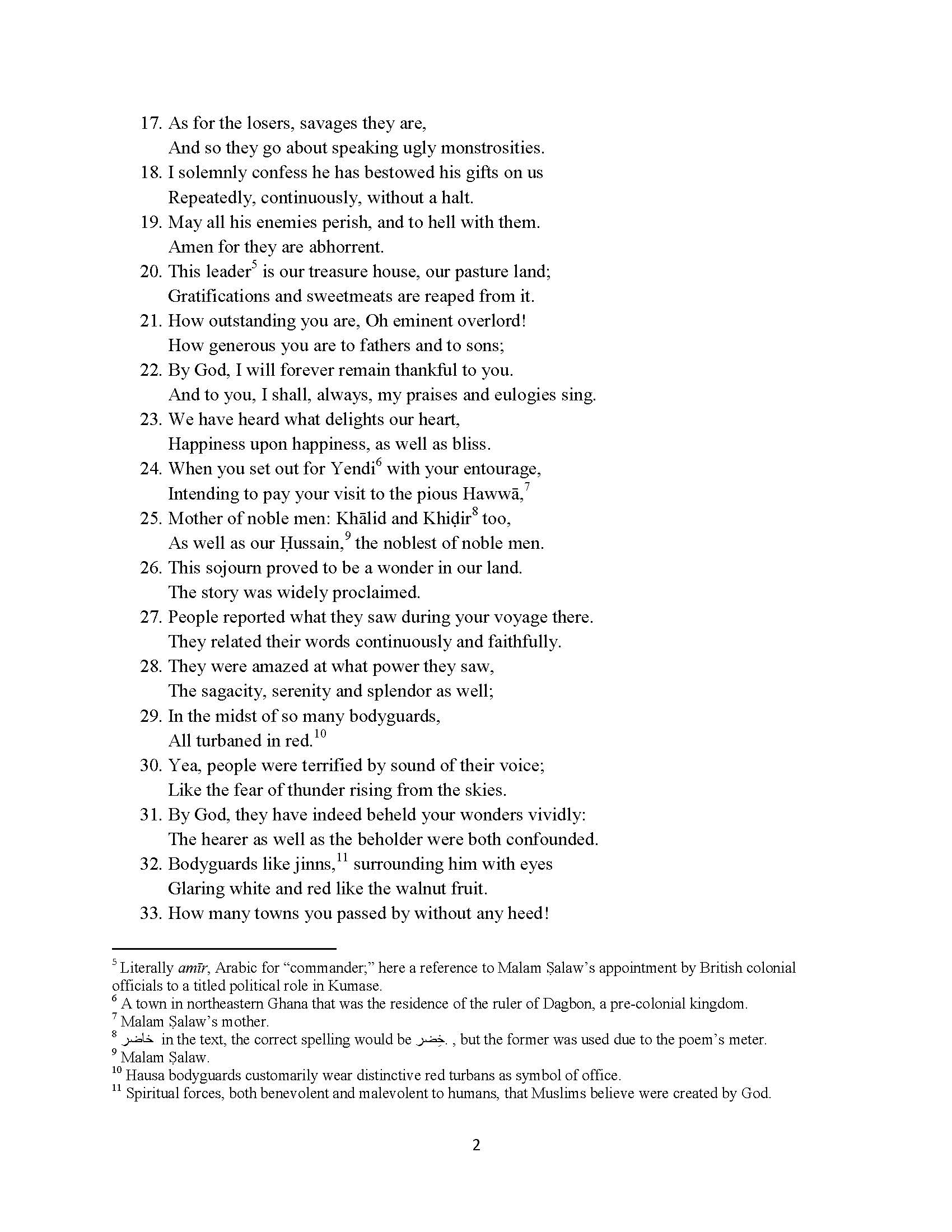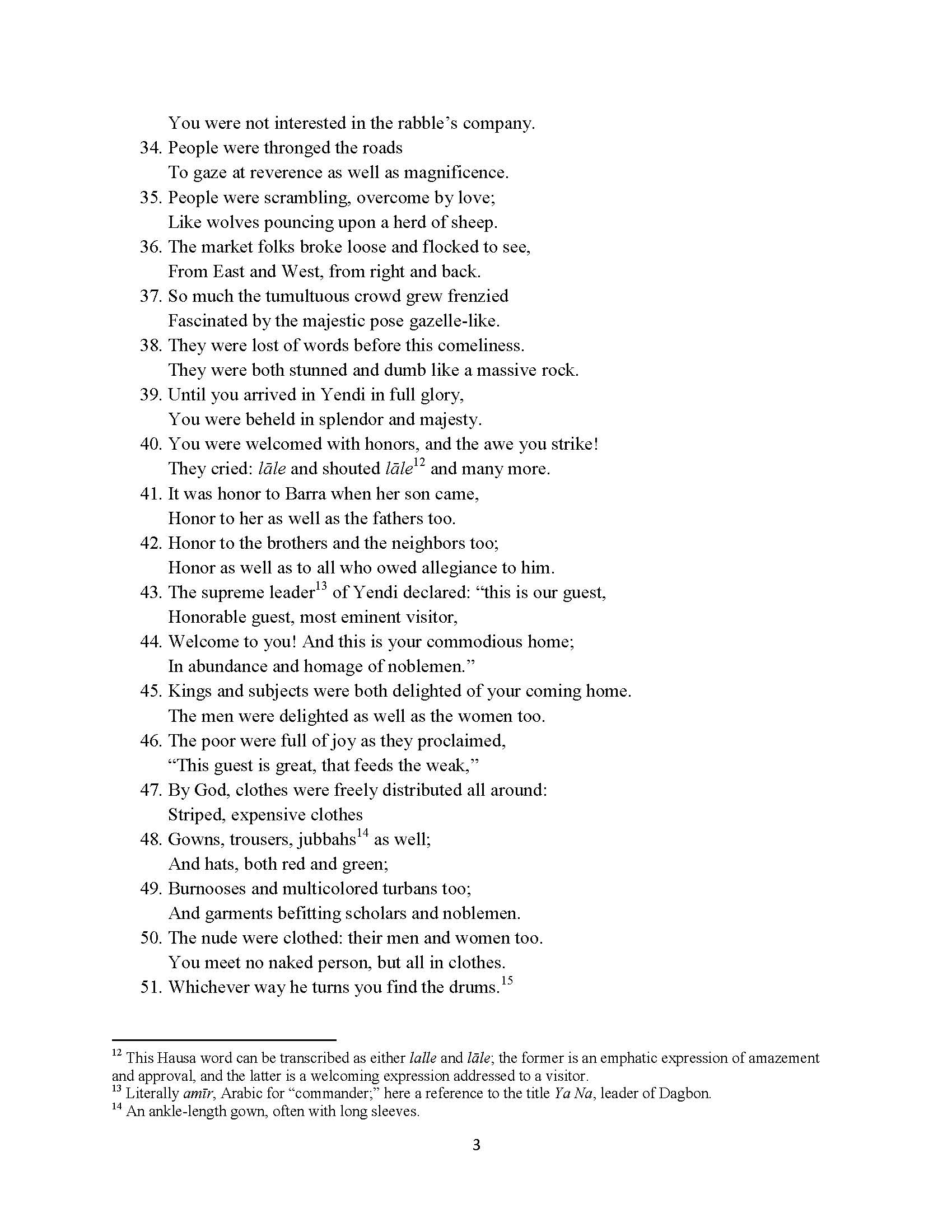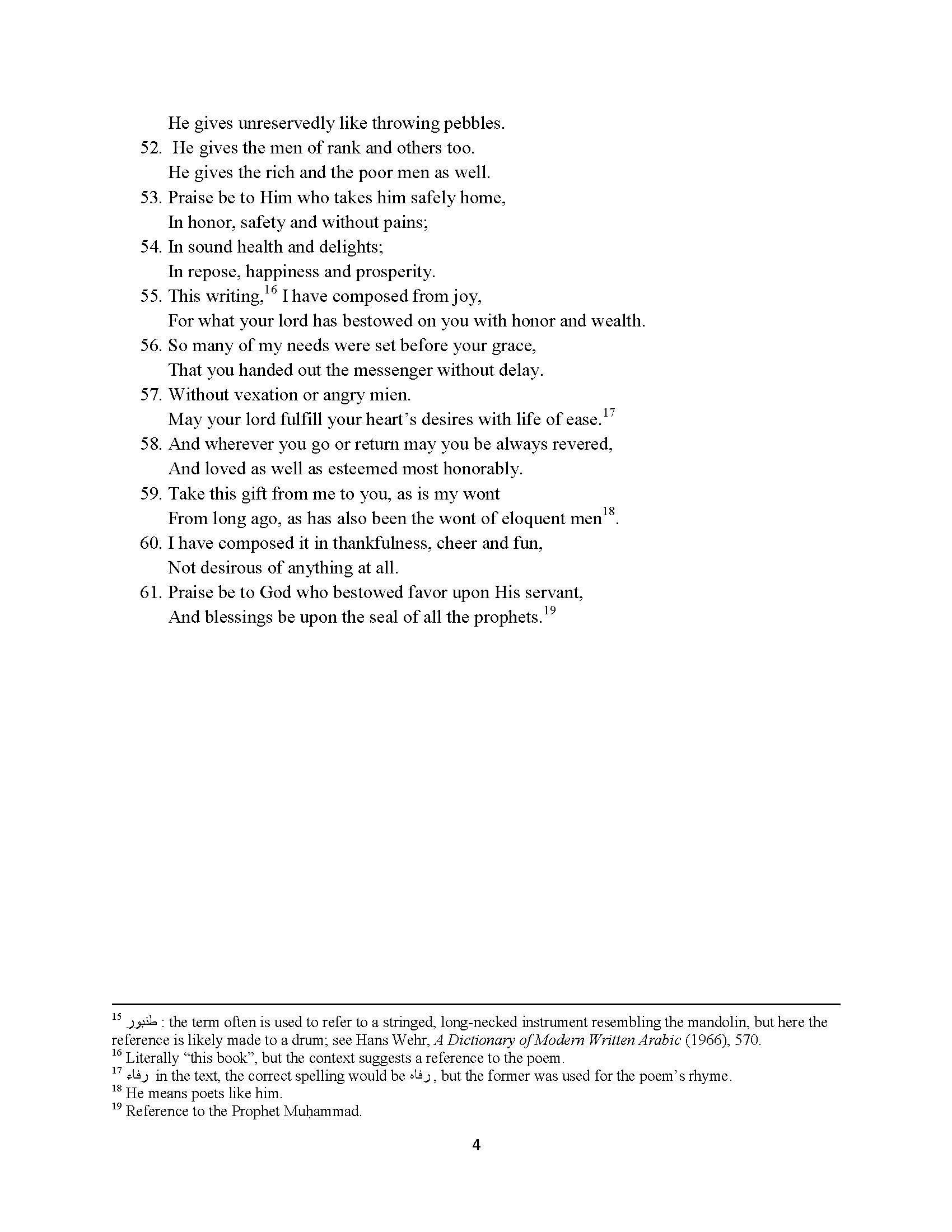Discourses of Muslim Scholars in Colonial Ghana
by John Hanson and Muhammad al-Munir Gibrill
Malam Ṣalaw 3 (praise poem)
Creator: al-ḥājj 'Umar ibn Abī Bakri of Kete-Krachi
Contributing Institutions: Muhammad al-Munir Gibrill; John H. Hanson; Institute of African Studies, University of Ghana at Legon; Northwestern University; MATRIX: The Center for Humane Arts, Letters & Social Sciences Online at Michigan State University
Contributor: Muhammad al-Munir Gibrill (translator and transcriber); John H. Hanson (reviewer)
Description: This praise poem is one of several composed by al-ḥājj 'Umar Krachi (al-ḥājj 'Umar ibn Abī Bakr), in honor of Malam Ṣalaw (Ḥussain al-Kashnāwī).
Malam Ṣalaw was a prominent Hausa scholar who assumed positions of influence in Kumase during the British colonial era. Malam Ṣalaw was born in Yendi (in today's northeastern Ghana); his father originally was from Katsina in northern Nigeria and his mother was related to the royal family of the Dagomba kingdom. Malam Ṣalaw studied with al-ḥājj 'Umar Krachi in his youth and later moved to Kumase, where he was recognized by the British colonial administration as head of the Hausa community. Malam Ṣalaw eventually consolidated considerable influence and secured British recognition as the leading Muslim jurist in Kumase. Resistance to his role from other Muslim communities in Kumase eventually led to his removal from office in 1932, whereupon Malam Ṣalaw departed and took up residence in Katsina. For Malam Ṣalaw's tenure as head of the Hausa community in Kumase, see Enid Schildkroudt, People of the Zongo (Cambridge: Cambridge University Press, 1978), 198-205.
This poem celebrates an official trip undertaken by Malam Ṣalaw to visit Yendi in the late 1920s. Malam Ṣalaw's mother still resided at the Dagomba capital at the time, and Malam Ṣalaw had been appointed head Muslim jurist in Kumase by the British.
Al-ḥājj 'Umar's poem offers a detailed description of Malam Ṣalaw's entourage as well as the reactions from communities he passed by on his way: residents came out in large numbers to register their admiration and awe at the sight of the royal cavalcade, and local markets were disrupted as people left to follow the retinue. The poem also describes the dramatic entrance of the procession into Yendi, when the whole town reportedly became euphoric with people expressing their delight in loud acclamations and shrill ululations of welcome. The climax of the day was the procession of the Yendi royalty whose appearance in public expressed their appreciation, pride and reverence for Malam Ṣalaw, a former resident and son of a royalty himself. Malam Ṣalaw distributed gifts to everybody: men and women, young and old, the rich as well as the poor. The poem begins and ends with praises for Malam Ṣalaw and concludes with prayers for his safe return to Kumase. This poem bears testimony to al-ḥājj 'Umar Krachi's poetic skills in vivid representation and effective imagery.
The poem is composed in the rajaz meter, one of sixteen meters of classical Arabic poetry. The full double hemistich form runs as: mustaf'ilun, mustaf'ilun, mustaf'ilun/ mustaf'ilun, mustaf'ilun, mustaf'ilun; and the poem rhymes in the letter hamza. This recalls the use of the hamza by poets such as the medieval Egyptian Sufi poet al-Būsīrī (1211 – 1294 CE) and the early twentieth-century Egyptian poet laureate Ahmad Shawqī (1868 – 1932 CE).
Date: 1928
Date Range: 1920-1929
Location: Kete-Krachi , Volta Region, Ghana
Format: Text/pdf
Language: English
Rights Management: Educational use only, no other permissions
Digitizer: Muhammad al-Munir Gibrill ; MATRIX
Archive: University of Ghana at Legon, Institute of African Studies
Source:
University of Ghana at Legon, Institute of African Studies, Arabic collection, document number 239 (iii).








